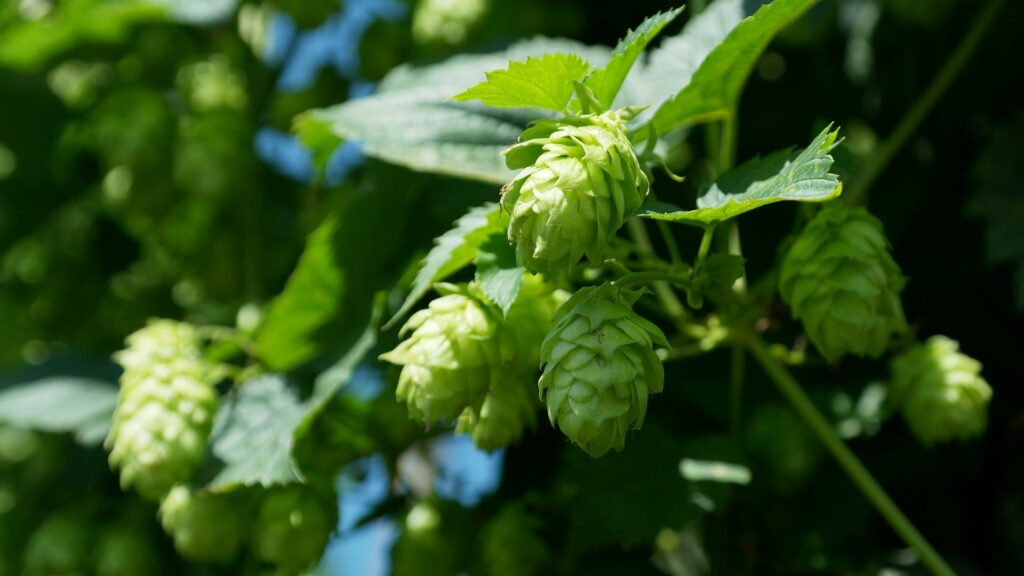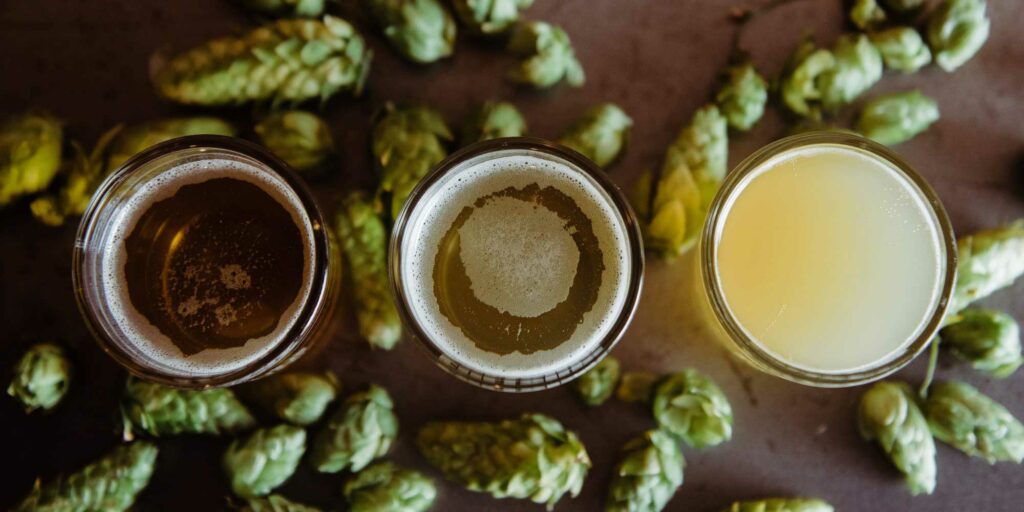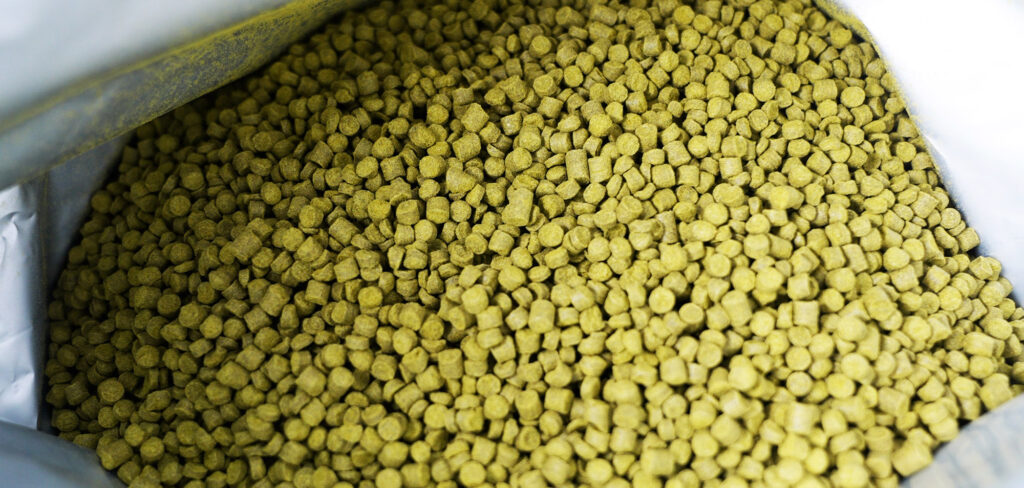
How I learned to stop worrying, and love English Hops.
I used to think English hops were rubbish.
In fact, a decade ago – besotted with pungently hopped American IPAs, packed full of intense flavours of citrus and tropical fruit – I would actively berate them. North American hop varieties like Simcoe, Amarillo and Citra felt like the latest records from the coolest underground bands, while traditional English cultivars such as Fuggles, Bramling Cross and East Kent Goldings were what your dad listened to.
To me, English hops were boring, old hat, and out of touch. I did not understand why some people showed such devotion to what I thought at the time was an ingredient with increasingly diminishing relevance to modern beer.
They say, however, that no one is more devout than a convert. I have the tendency to experience what I call “beer moments” – epiphanies that occur when I taste or smell something that contradicts what I think or feel about a certain beer trend, or part of its culture. The aforementioned American IPA is a great example, because it demonstrated to me the potential in terms of what beer could taste like. But not all of these moments have involved bold, or brash experiences in terms of flavour.
A beer moment I haven’t talked about as much, but is no less significant, is the first time I plucked a wild English from a bine, rubbed it between my palms, and inhaled.
It was September 2017, and I was visiting a farm adjacent to the hamlet of Ocle Pychard, just outside of Ledbury, Herefordshire. I was not there for hops, or beer, however, but cider – this was the residence of legendary cidermaker Tom Oliver, who, as I learned on that visit, used to be a hop farmer.
Unfortunately, due to a dreaded fungus called Verticillium Wilt, that inhabits English soil and is deadly to many hop varieties, Oliver swapped out hops for livestock a long time ago, before eventually finding his niche within cider and perry. Not all of the hops were ripped out of the ground however, and some still grow wild around the barn that holds his barrels and fermentation vessels.

With my visit taking place in late September, the hops growing on the bines were close to full ripeness. I remember spotting the plump, green cones and strolling up to them, plucking one with my fingers, before peeling back the flowers to expose the lupulin locked away within.
The aroma was astounding, the sticky, bright yellow resin that now coated my palms and fingers establishing pungent aromas of fresh lemon zest, and an almost savoury, white pepper-meets-lemongrass character within my nostrils. I was taken aback. Until then I considered that English hops were earthy, herbal, and dare I say “twiggy”. These were nothing of the sort. Oliver informed me that they were in all likelihood Goldings, and that the fresh, citrus aromas were very typical of a crop, before they’re eventually dried and kilned for use in brewing.
This left me with questions. What happens during the lifespan of this hop that transforms it from such a fragrant, appealing ingredient, to one I perceived as being so lacklustre? To be honest, I discovered that some of this was bias on my part; a result of being exposed to so many ‘exciting’ US varieties. A visit to Hukins hop farm near Tenterden, Kent, in 2019 eventually helped me fill in the remaining blanks.
Walking the trestles with Ross Hukins and Will Hawkes (who wrote about Hukin’s and his farm for my publication Pellicle) was a revelation. Even though it was late summer, and picking was still a few weeks off, young cones of Fuggles, Goldings and other lesser known varieties such as Ernest were beginning to sprout. What was fascinating was how dedicated Hukins, who abandoned a job in the city of London to invest in his generational family farm, has dedicated himself to uplifting the quality of English hops.
I learned that Hukins spent time in the hop regions of the US, such as Yakima in the Pacific Northwest. Here he studied how the farms of this region – which produce 47% of global hop yields, compared to just 1% in the UK – process and package the hops in order to maintain quality. The result of this is that he invested in the construction of a US-style ‘oasthouse’ (a historic term for hop processing plant) in order to package processed hops before they had time to deteriorate into the twiggy, earthy cones that my former bias told me English hops taste like.

Perhaps most interestingly, Hukins informed me how English hop varieties, especially heritage ones like Fuggles and Goldings, are far more delicate than their US or European counterparts. This means that a lot of modern processing equipment is no good for harvesting them, as it’s too heavy handed. It explained why there was so much old equipment lying around the farm waiting to be reconditioned, as it was much more viable for managing the hop quality during picking. When combined with a greater level of care and attention at the packing stage, that vibrant lemon character I experienced with a fresh Goldings hop can be preserved, and imbued into beer.
Hukins is not alone in this forward-thinking approach to English hops. Brook House hops in Herefordshire have invested heavily in a similar fashion, brewer Eddie Gadd of Gadd’s brewery in Kent has long championed local farms (and if you want to taste East Kent Goldings at its very best his No. 3 pale is the perfect way to do so.) Larger players, such as hop merchants Charles Faram, are also investing in the future of English hops, not just through the preservation of heritage varieties, but through breeding programs that are developing new varieties, with bolder characteristics than English hops are typically known for.
A few years ago Faram’s released Jester, to some acclaim, and while its herbaceous, strawberry character added to the breadth of flavours available from English hops, it was merely the start of these new developments. From this, varieties such as Olicana and Mystic, which are more flavoursome still, have begun to emerge. One cultivar that particularly impressed me was Harlequin, an aroma hop with peach and apricot characteristics, making it viable for modern styles such as New England IPA. I also recently got my hands on a new variety called Most, bred in the UK but cultivated in the Czech Republic (due to its susceptibility to the aforementioned Verticillium Wilt) which had remarkably juicy, fruit-forward flavours that would happily sit among some of the most widely used aroma hop varieties.
I’m now convinced that the UK is producing some of the finest hops in the world, and it always has been. The positive is that, as brewing continues to modernise and looks to improve the experience it can offer drinkers, the quality will keep improving. There is, however, a downside; only 58 hop farms remain in operation in the UK today. If we do not give English hops the care and respect they deserve, they will cease to exist, which would be a tragedy.
Use them or lose them, as they say. Maybe it’s time to dust off the recipe books and try out that ESB or Mild you’ve been pondering brewing for a while? Or perhaps it’s time to turn to newer varieties like Olicana or Harlequin, and unlock the latent potential in our home-grown new varieties.
—Matthew Curtis